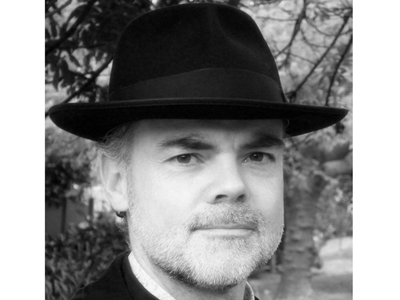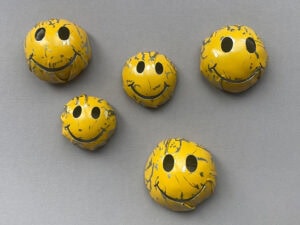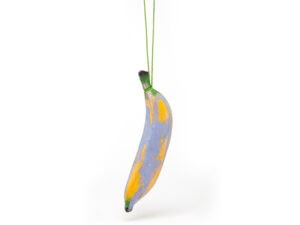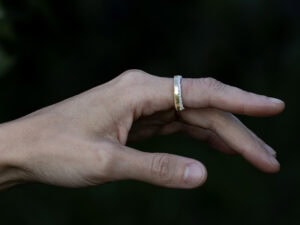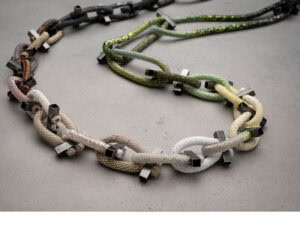There are significant moments that define the relatively brief history of art jewelry. In 1972, the exhibition Objects and Acrylic Jewelry, at Electrum Gallery, London, opened a new chapter in the development of the field. It displayed work by Claus Bury which combined precious metal with a material previously considered profane and worthless as jewelry. The use of acrylic was a break with the traditional repertoire of value. In doing so, it continued the mission set in train by Hermann Jünger to realize the unique artistic potential of jewelry.
This journey has a spatial as well as a temporal dimension. Modernism in jewelry has extended beyond its birthplace in Europe to the new worlds of North America and Australasia. Even my far-flung corner of the world has its contribution to this history. The 1980s punk movement in New Zealand gave vent to an antipodean irreverence that eventually flowered in the work of Lisa Walker, who smuggled the glue gun into the Munich Academy. This is a popular movement in which creativity triumphs over capital, a kind of utopian “artistocracy.”
In the 21st century, we find the field of art jewelry continuing to grow, now particularly in the East, including China, Taiwan, Thailand, Pakistan, and Iran. According to the familiar script, we would welcome each of these cultures as making its own contribution to the critique of preciousness, reflecting values that resist the reduction of jewelry to mere commodity.
What kind of contemporary jewelry is being made in these emerging scenes? This is a complex and evolving question. I’ve chosen three jewelers to suggest a diversity of global jewelry, from West to East Asia and South America.
During this overview, I ask that you keep your mind open as to the relevance of the modernist critique of preciousness. Might there be more appropriate ways of evaluating their contributions to our field?
Baharak Omidfar
While traditional Persian jewelry is predominantly a matter of gemstone setting, there is much innovation today in its artistic expression. Jewelry is widely taught through the system of art universities in Iran. A more experimental conceptual jewelry is the focus of Mahe Mehr Institute, an academy established by three visionary gallerists in Tehran, including the founder of Aria Gallery, Aria Eghbal.
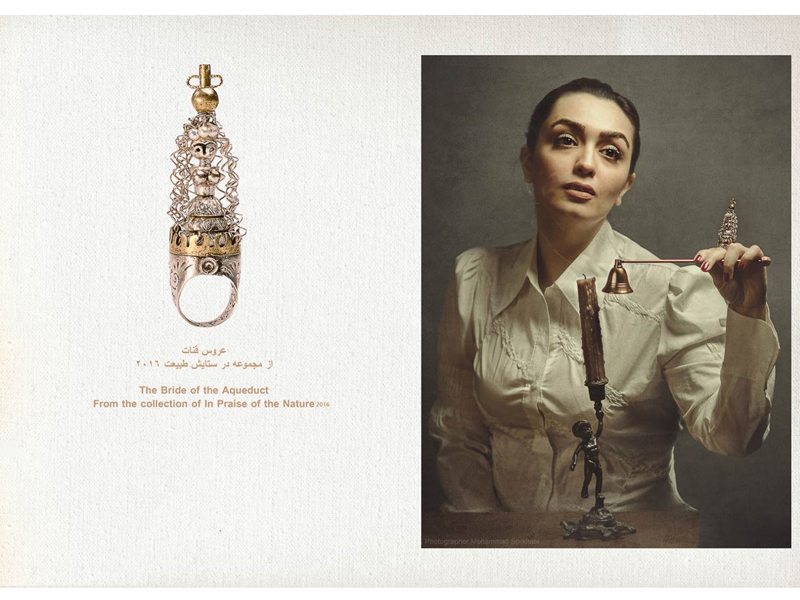
I first came across the work of Baharak Omidfar when I visited Mashaad as a juror for the World Crafts Council, then assessing its application as a World City of Gemstones. Omidfar studied art research and technique in Iranian universities. Her jewelry reflects a strong interest in the pre-Islamic Zoroastrian culture. For instance, The Bride of the Aqueduct celebrates a mystical dimension of Persian culture. The forms are drawn from the various depictions of goddesses of fertility from the Elamite period, 3000 BCE, such as a silver cup from the National Museum of Iran. As she explained it to me by email:
This jewelry refers to a ceremony that was developed to improve the conditions in the arid regions of Iran. A widow is married to the aqueduct to ensure and protect the supply of water. The woman must swim once a week in the water of the aqueduct. The Qanat bride ceremony is the remains of the ancient custom of sacrifice for water (Anahitaisme ritual). Woman is considered as a symbol of birth and fertility in relation to water and she also makes water fertile and creative. The purpose of this jewelry is to emphasize the importance of water, particularly in Iran. It also highlights the respect that our past culture has granted for women, life, water, and reclamation.
While essential to the work, the story is not immediately evident in the object itself. To attach the story, Omidfar has composed a photograph that offers a theatrical still of its use. For Omidfar, such Zoroastrianism is not something limited to the past.
While looking to the pre-modern Iran, Omidfar’s work is not limited by nostalgia. Her recent work also includes a piece titled Tehran Lady that engages critically with the conservative opposition between the city and the village.
According to our mythology, the city is like a mother that protects her children. Female deities, such as Anahita, wear a crown-like castle or city fort on their head. The “Myth of Tehran” involves a dualism of good and evil, in which the renovated Iranian capital is placed in a religious context. Our culture is characterized by an everlasting struggle between good and evil or Ahura and Ahriman. In popular belief, the city, and particularly Tehran, is a center of sin, destruction, and filth. By contrast, the village or town is a symbol of purity and divine nature. This belief is a reaction against modernity.
However, the culture of Iran is based on the Trinity, not dualism. This Trinity comes from the myth of Zurvan, in which good and evil are created from a finite time. In the past, duality has been a pretext for the dominators (rulers and the powerful) to increase their control over the people.
In contemporary Iran, drawing on the past can seem to be a conservative gesture, railing against the corruption of modernity. In this series, she uses the ancient belief itself to counter this reactionary perspective.
Rings are commonly worn by men in Iran, but they have a special power for women. Omidfar has chosen one of the few forms of expression that is publicly available to her, forcefully presented in the accompanying photography.
But from a modernist perspective, Omidfar’s work looks retrograde. There is little material experimentation in her work. Her rings are illustrative, drawing on the architectural styles present in Persian history. The key to her work is the use of jewelry as a way of reviving aspects of the traditional past. The photography helps present this as a contemporary personal gesture, rather than a historical revival.
Caco Honorato
We move now to an emerging jewelry scene on the other side of the world from Iran. It is a considerable challenge for the global art jewelry scene to connect such cultures as radically different as the Shia Iran and the Catholic Latin America.
The Chilean scene has emerged organically alongside Argentina in the 21st century, with relatively little institutional support. The Mexican symposium Walking the Gray Area (2010) was an important catalyst, but much of the development has been through collectives such as Joya Brava and the En Construcción meetings. More recently, scenes have emerged in Colombia and Venezuela.
Caco Honorato is a member of Joya Brava and has exhibited his jewelry in Canada, Spain, and the Netherlands. But rather than become more “international,” his work has developed increasingly Chilean characteristics, as in the Intemperie series (2013), which drew inspiration from the Catholic form of reliquary.
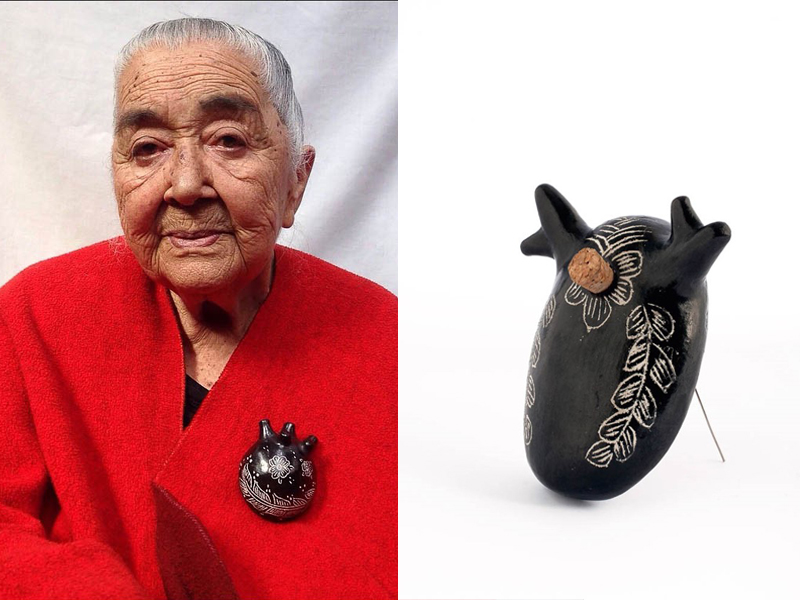
His most recent series, Lollaría un Mare (I Would Cry an Ocean, 2016), draws explicitly on Chilean form and content. Honorato worked with artisans from the village of Quinchamali to produce ceramic pendants in their traditional white on black style. Though this type of work is mostly ornamental these days, Honorato introduced a new function for these forms—the collection of tears (what the Romans termed lachrymatories). To contextualize this, he quotes the Chilean filmmaker Raoul Ruiz: “The Chileans … we are sad.” These cofres de lágrimas, “chests of tears,” reflect a particular melancholy over untold sufferings, and were exhibited at El Museo de la Memoria, in Santiago, established to commemorate the coup against Allende in 1973. Integral to this work is the dedication to Ana González de Recabarren, a fighter for human rights in Chile. The work is accompanied by a video outlining her life.
Again, there is nothing particularly surprising in the use of materials. In fact, Honorato has outsourced most of the production to traditional artisans. The key value lies in the compelling local story his work transmits, which the artisans underpin with a relational value. Honorato’s work cannot be understood outside of the cultural project in which it is embedded.
Rudee Tancharoen
Finally, we move to a part of the world beyond Judeo-Christian civilization. Thailand has a deeply rooted jewelry tradition—particularly in the popular use of amulets—that pervades everyday life, both rural and urban. Here, the growth of contemporary jewelry follows the more conventional path of a visionary gallerist, a well-connected and driven individual who develops a local node for the international circuit. Atty Tantivit established Bangkok’s Atta Gallery in 2010, and it has since become a key node in the international circuit.
Atta derives its name from the Sanskrit word for “self.” Though Buddhism is often focused on disolving our sense of self, its use here marked a territory for author jewelry in a context which is otherwise anonymous.

Rudee Tancharoen is one of Atta’s signature artists. While she gained her training as an art jeweler in Europe, Tancharoen brings a distinctively Thai approach to her work. Though modernist in appearance, her work has not appealed to the established Western gallery circuit. Rather than be seen aesthetically, her jewelry has been made for a Buddhist spiritual context as a tool for contemplation. The Tales of Truth (2014) solo exhibition featured the work Destiny, which operated as a form of meditation upon layers of reality, at the core of which is thought. (It’s worth noting that the Russian Matrioshka doll began as a Japanese Buddhist object).
The most recent series, Everything Is Anything and Nothing (2016), was produced from dust collected in a paper factory. The pieces evoke the phenomenon of trace and play upon its transience. Spiral forms are created by making a paste of the dust and wrapping it in cloth that is then squeezed. Alternatively, the flat forms are created by leaving paper dust in the rain.
I sat in Tancharoen’s studio on three separate occasions in order to grasp her thinking. She explains her work initially as a reaction to the civil conflict in Thailand between the red and yellow shirts, which she saw as providing merely an illusion of change that, in effect, keeps a corrupt foundation intact. This fits with her Buddhist beliefs, which seek to locate such dramas internally and therefore take a responsible position in the world. She is drawn beyond her Thai culture to Chinese Taoism, with its focus on nature.
Tancharoen thinks beyond the object to also consider the way it will circulate. The works are sold without prices. Tancharoen leaves it up to the customer to determine how much they will pay for the work, which many find disconcerting. This aligns with her challenge to the wearers to look inside themselves.

It is very possible to accommodate Tancharoen’s work within a modernist critique of preciousness—dust is the ultimate material from which to create jewelry. Yet this would not take cognizance of its place in Buddhism. Tancharoen has individualized the temple in the form of personal ornament. She relates this to the amulet tradition in Thailand, which she sees more as a form of personal reminder rather than a source of mysterious power. She has adapted the Buddhist framework to the lifestyle of the urban dweller, who moves between metropolitan centers and the local village.
Limits of Modernism
While this small sample of global art jewelers is culturally quite diverse, they all share a dependence on cultural context. Their works do not stand on their own. Each of them seeks out an element that has been displaced by modernity and urbanization. This can be an abandoned religious tradition, ancient architecture, traditional craft, or spiritual practice. Their creative challenge is to find a way of accommodating this within the jewelry form. This form provides a means for that tradition to circulate in an individualized modern world.
Dualism
As the field of art jewelry matures, might we begin to imagine a field with different aesthetic modalities? We can begin with the idea of a dualistic field. While accepting the dominant modernist value of originality and truth to materials, might we also give credit to those who seek to creatively interpret what has been lost in this process? Could we have art jewelry that breaks with the past, alongside practice that mends this break? One possible scenario, then, is to have two separate frameworks for art jewelry—the modernist West and the traditionalist East, following the atavistic division between those who look to the beginning in the rising sun (East), versus those who follow its future, where it sets (West).
In the heart of the Western academy, there is a movement that seeks to critique the presumption of modernity as an inevitable course of history. Bruno Latour’s classic text, We Have Never Been Modern, argues that the modernist ideal of an unmediated reality has always had hidden mediators, particularly in the form of technological devices. This has most recently emerged as a movement, Reset Modernity, which has engaged artists in reimagining our creative relationship to the earth.
When faced with a similar question of location in art jewelry, Damian Skinner posited ambition as a value that might be readily translated across contexts. This could work as a common value in both modernist and traditional practices, reflecting the level of seriousness involved in each. There could be just as much ambition in rendering an ancient form of architecture in jewelry form as inventing a new material language for ornament.
But we do need to confront the specific challenge that those with a traditional orientation confront. It is not enough just to quote the past in a postmodern pastiche. The aim is to find a way of realizing the spirit of the past, as well.
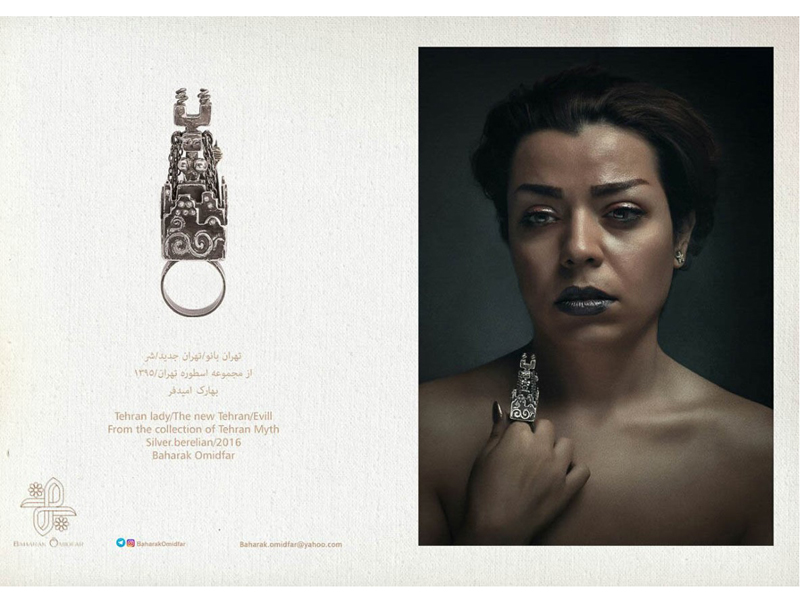
In her introduction to Illuminations, Hannah Arendt depicted Walter Benjamin’s own recovery of the past as a “diving for pearls”: As past forms sink to the bottom of history, their unique meanings crystallize in ways that might offer new perspectives in our time. We see a version of this today in the hipster aesthetic, which recovers dying trades like tattooing or beer-making to repurpose them as creative practices that can offer a sustainable lifestyle.
But such a position presumes a distance from the past: Tradition is seen as an eclectic collection from which the contemporary artist can sample at whim. A more connected engagement is articulated well by indigenous artists who seek to relocate customary practices in their work, such as the Māori jeweller Areta Wilkinson. Here the imperative is not simply to draw from the past as a treasury of antiques, but also to take responsibility for continuing one’s culture by keeping the stories alive. This takes a position of custodianship in one’s creative practice. It involves not only ambition, but also responsibility for maintaining a tradition, in spirit as well as name. How do we acknowledge this responsibility in practice today?
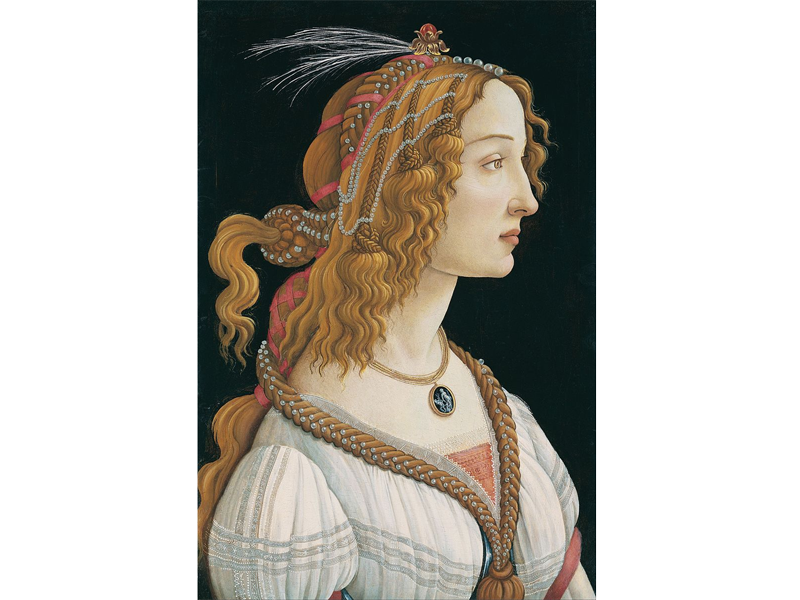
A Jewelry “Renaissance”
Is there something within Western culture that reflects this turn to the past? A strong theme of the Renaissance is the recovery of lost cultures, notably the classical Greek and Roman. From this perspective, Sandro Botticelli’s Birth of Venus (Nascita di Venere, mid 1480s) is considered to be inspired by the statue Venus de Medici, a first-century BCE marble copy of an ancient sculpture. While the sculpture has limited color and context, fixed in its architectural setting, tempera painting added a theatrical scene, giving new life to the myth of beauty.
By this means we see the transformation of the past into a language of the present, giving the classical culture a new relevance in the Florentine court. It is not only large-scale sculpture that inspires painting. Botticelli’s Portrait of a Young Woman (1480-1485) features Lorenzo de’ Medici’s prized Seal of Nero, a carnelian depicting the victory of Apollo over Marsyas, a triumph of authority over rebellion. Renaissance painting even appropriated jewelry in this new medium.
It may be a grand claim, but it is worth considering the extent to which the global art jewelry scene presents body ornament as a contemporary medium for the recovery of lost meanings. As such, it reflects an individualization of culture, suited to a mobile population that can carry its traditions across boundaries. It offers an alternative repository of culture in response to the decline of the collective structures that once supported tradition, such as the church or the state. This is particularly important in a country like Iran, where there are such strict rules about what can be presented in the public realm, especially for women.
The extension of the art jewelry world to the East may indeed herald a kind of “renaissance” for our field. Modernism opened the door for considerable experimentation, fomenting new possibilities for imagining body ornament. But it did mean leaving behind the traditional contexts of jewelry, many of which we know now through anthropology. These involve the ritual power of jewelry to alter our social fabric, whether to extend support through amulets or to build trust with promise objects.
This “renaissance” reopens the door to a jewelry which is more than an aesthetic phenomenon. It extends beyond the white walls of the gallery and not only reconnects us to what we lost, but also rejuvenates what had become empty traditions. It makes the world new, again.

